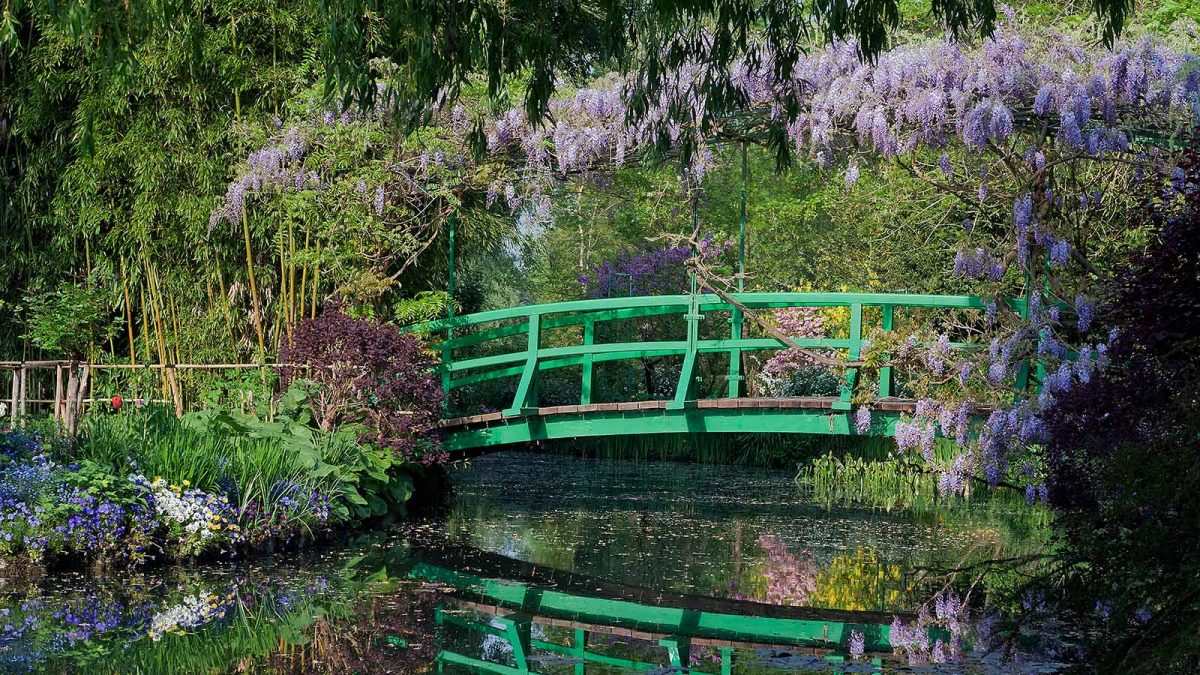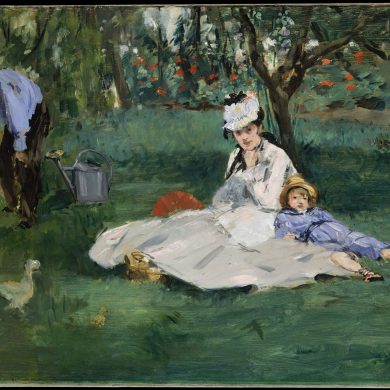Updated on 17 June 2020
Reading time: 5 minutes
Monet was his great-grandfather. Philippe Piguet is an art critic specialising in Claude Monet and commissioner of Impressionist exhibitions. We’ve invited him to talk to us.
What childhood memories do you have of Giverny?
I used to spend all my holidays with my grandmother there, sometimes playing with my brother in Monet’s art studio, or messing about fishing for roach in the ponds. From about the 1960s on I saw the whole place develop bit by bit and the gradual growth in interest in the place from right across the world. Monet had settled down there in 1883, with my great grandmother, whom he married in 1892. He lived there for 43 years, very much a disciplined family man but an epicurean and often surrounded by friends.
What sort of a man was Monet for you?
He was clearly a patriarchal kind of figure whose artistic importance went right over my head. Within the family circle he was seen both as a loving and an authoritarian person. I like to see him as a painter bringing well-being and colour into the everyday.
In what ways did this total immersion in the world of Impressionism affect your life?
Well, it developed in me a life-long interest in the family history. As a teenager, with my brothers and sisters we would each in turn spend a weekend there with my grandmother. I used to go through the photographs and letters and I brought together the first family archive. So I was able to remake a film on the life of Monet at Giverny, and then, as an historian and painter, specialised in the life of my great-aunt Blanche Hoschedé-Monet, who was a painter in her own right. I even set up exhibitions on contemporary art in one part of the house. That was between 1973 and 1984.
Which Impressionist painting has moved you the most?
The portrait of my grandmother Germaine Hoschedé as a child, with her doll, a painting Monet did in 1877? It used to hang in the dining room, but today it’s in the Kimbell Art Museum in the United States.
Do you pick up vibes of your illustrious ancestor anywhere in particular?
Inevitably the famous Japanese bridge over the water lily pond of course, but I’m also thinking of my walks along the banks of the river Epte where the poplar trees line the river, just a stone’s throw from Giverny. Monet made this spot the subject of a magnificent 23-picture series.

Contemporary art is your passion. What connection do you see between Impressionism and the creative arts today?
Impressionism broke up the act of painting into little individual touches of colour which is akin to pixels today. The idea of series paintings was born with Impressionism and this idea is one of the most widely used nowadays. By the same token the immersion in colour which characterised the Impressionists is close to the idea of digitalisation. This movement played a key role in passing the baton on to contemporary creative artists.
What sort of contemporary painting are you standing in front of today that generates that same feeling of impressionism?
I think of the American artist Joan Mitchell whose abstract works of multiple colour compositions are filled with colour and a very sensual sense of light. She set up in Vétheuil in the Sixties, overlooking the house where Monet used to live before he settled in Giverny. She’s a very close friend who’s taught me a lot about Monet’s influence on American painting.
You are overseeing the Normandy Impressionist Festival 2020. What idea do you want to get across through this Festival?
Sometimes we tend to forget just how much Impressionism blew away old ways of doing things. It was the first artistic movement of the Third Republic, and made a stand against the Official Salon which had appointed itself as the arbiter of good taste in art. These rebels were striking at the very stuffy, hide-bound society of its time. What I’m hoping is that this festival has the same capacity to throw out the old canons and expectations, and that it can, while paying tribute to the past and the power of this movement, show a way forward and allow the preoccupations of artists today to break out.
Where to get an “Impressionist Experience” according to Philippe:
A landscape to contemplate…
“Take in the cliffs at Etretat! The view is just stunning! The sea, the sky and land meld into a range of incredible colours that is ever-changing. It is often said that Impressionism is an art of the elements. Here, if you can get to see the cliffs in an incandescent sunset you have all you could want in a painting!”
A corner of the countryside…
“La Bouille, in a loop of the Seine, near Rouen. The village has inspired many painters and is absolutely charming.”
A lively place…
“Le Tetris, a theatre and creative arts centre in Le Havre. There I pick up that collaborative and convivial spirit of the Impressionists and that the artistic brainstorming that they went through.”
(Fort de Tourneville, 33 rue du 329ème 76620 Le Havre)
A Sunday outing…
A walk along the seaside promenade at Cabourg or canoeing on the Seine, a must, I’d say!
An urban stroll…
“Monet, Pissarro and Caillebotte all set up their easels in Paris to take in the great bustle of the boulevards! Why not do the same? Try the Boulevard des Italiens or the Boulevard des Capucines!”


